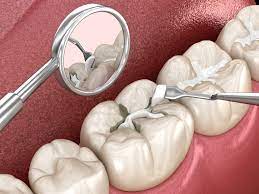Everything you need to know about tooth fillings starts with understanding why they are essential in modern dentistry. Tooth fillings are restorative treatments used to repair minor fractures or decay in teeth. They play a crucial role in preventing further Dental Tooth Filling damage by restoring the shape and function of the affected tooth. Whether it’s due to a cavity, wear, or small cracks, fillings provide a simple yet highly effective solution that protects your oral health and helps maintain a natural smile.
What Are Tooth Fillings and When Are They Needed?
Tooth fillings are materials used to fill the void left after decayed or damaged portions of a tooth are removed. They restore structural integrity, prevent further decay, and improve the tooth's appearance. This treatment is among the most common dental procedures and is usually performed in a single visit.
You may need a tooth filling if you experience:
- Toothaches or sharp pain when eating sweets or hot and cold foods
- Visible holes or dark spots on your teeth
- Rough or jagged tooth surfaces
- Sensitivity to pressure or chewing
- Damage caused by grinding or accidental trauma
Prompt attention to these signs can help you avoid more invasive procedures like root canals or extractions.
Different Types of Tooth Filling Materials:
Several materials are used in tooth fillings, each chosen based on the tooth's location, extent of damage, and aesthetic considerations. Dentists aim to match the filling to your natural tooth color when possible, especially for front teeth.
Common filling materials include:
- Composite resin: Tooth-colored, blends seamlessly with natural teeth, ideal for visible areas
- Amalgam (silver): Durable and cost-effective, suitable for molars where appearance is less of a concern
- Ceramic/porcelain: Aesthetic and stain-resistant, often used for inlays and onlays
- Gold: Very durable and long-lasting, though more expensive and noticeable
- Glass ionomer: Releases fluoride and is useful in areas that aren’t subject to heavy chewing
Your dentist will help you select the right material based on your needs and budget.
The Procedure: What to Expect During a Tooth Filling
Getting a tooth filled is a relatively simple and minimally invasive procedure. It typically takes 30 to 60 minutes, depending on the cavity's size and location. The dentist begins by numbing the area to ensure a pain-free experience.
Steps involved in a typical filling procedure:
- Administration of local anesthesia to numb the treatment area
- Removal of decay or damaged parts of the tooth using a dental drill or laser
- Cleaning and disinfecting the cavity to remove bacteria
- Placement of the filling material into the prepared space
- Shaping and polishing the filling to match the natural contours of your tooth
You’ll be able to resume normal activities shortly after, although some mild sensitivity is normal.
Aftercare and Longevity of Tooth Fillings:
Proper aftercare is essential to prolong the life of your fillings and maintain oral health. Although fillings are durable, they are not permanent and can wear out or break over time. Consistent oral hygiene and regular dental visits help ensure the longevity of your dental work.
Tips for caring for your tooth fillings include:
- Brush at least twice a day with fluoride toothpaste
- Floss daily to prevent plaque buildup around the filled tooth
- Avoid chewing hard objects like ice, pens, or fingernails
- Use a mouthguard if you grind your teeth at night
- Schedule dental checkups every six months for professional cleaning and evaluation
Fillings can last anywhere from 5 to 15 years, depending on the material used and your oral habits.
Potential Issues and When to See a Dentist:
While Dental Tooth Filling Treatment are effective, problems can arise if they wear down, crack, or become loose. Recognizing signs of trouble early can help prevent further complications such as infection, decay under the filling, or tooth loss.
Warning signs that your filling may need attention include:
- Sudden pain or sensitivity in the filled tooth
- Feeling a crack, chip, or rough edge with your tongue
- A change in your bite or discomfort when chewing
- Food getting stuck around the filling regularly
- Swelling or redness near the filled area
If you notice any of these symptoms, schedule a dental appointment immediately to have the filling examined and possibly replaced.





Comments